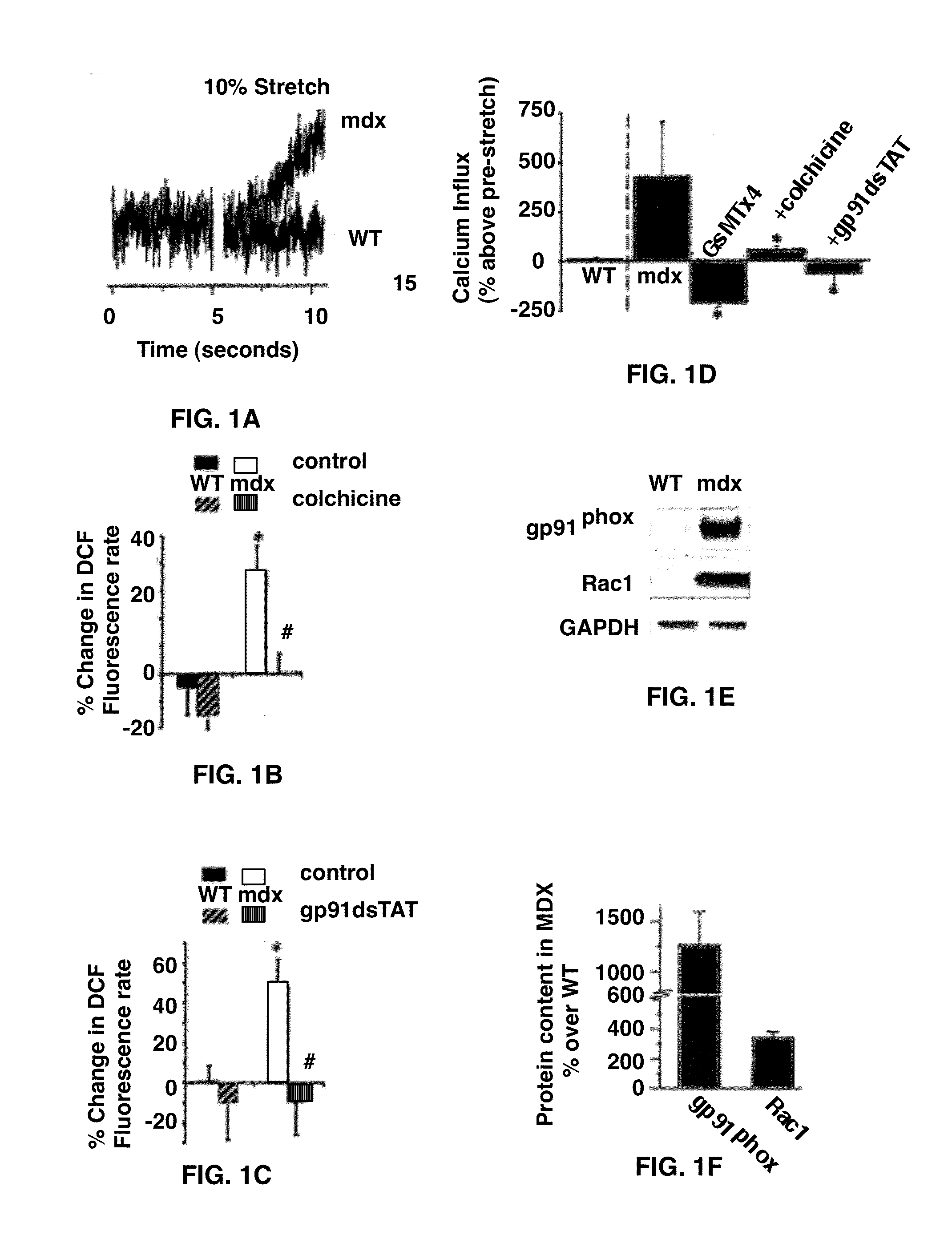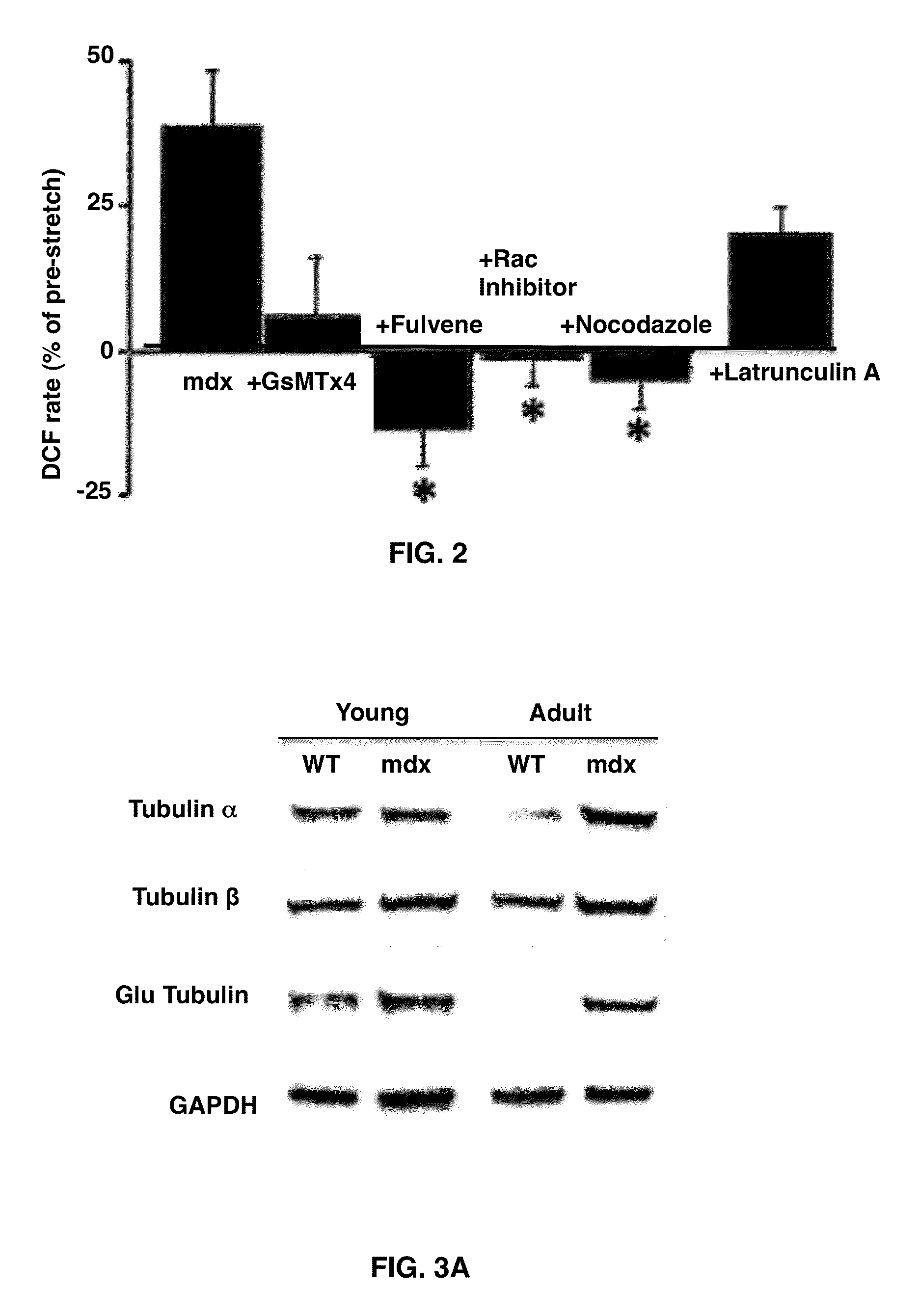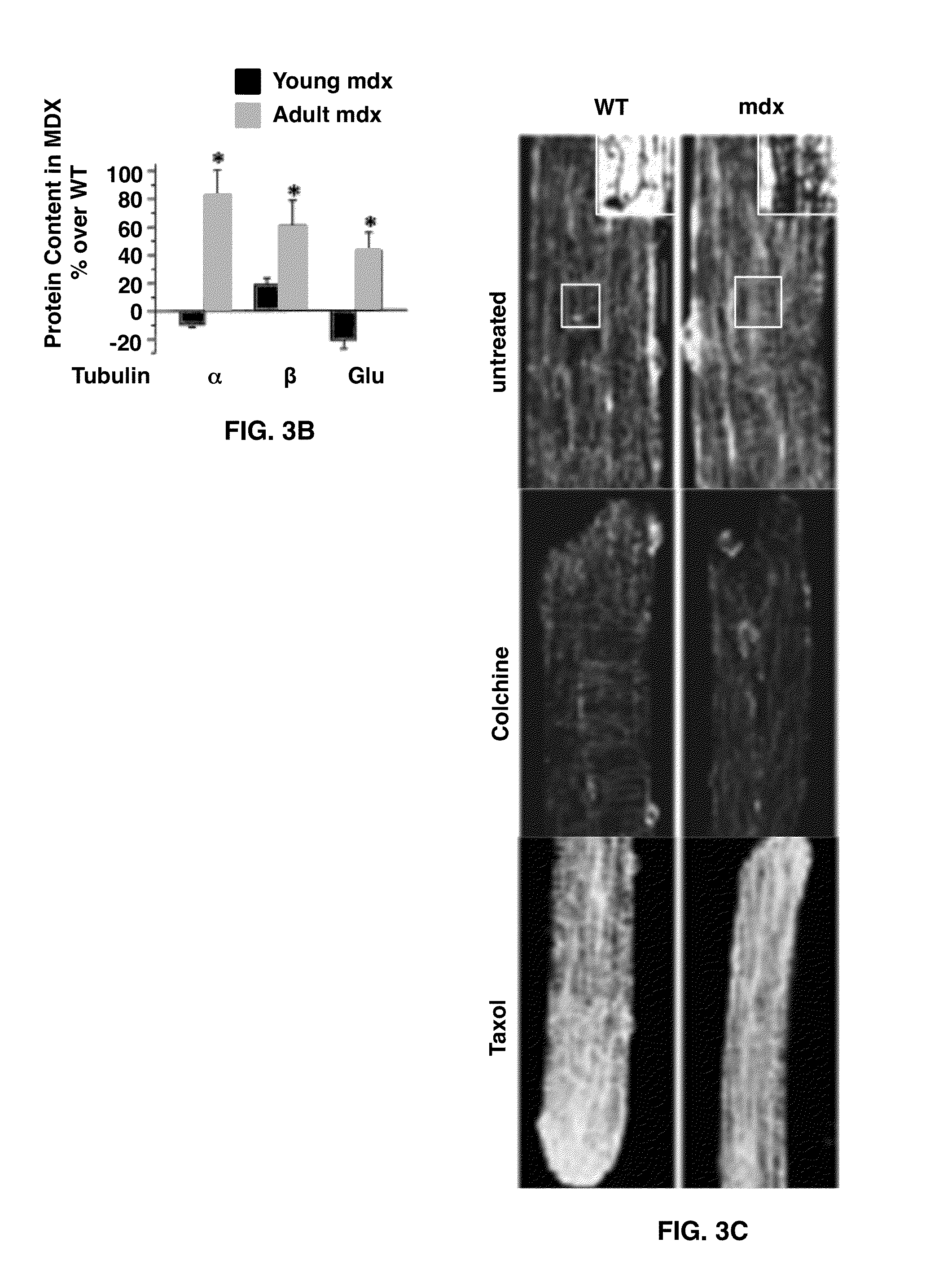Treatment of Muscular Conditions and Muscular Dystrophies
a muscular dystrophic and muscular condition technology, applied in the field of neuromuscular degenerative disorders, can solve the problems of limited mechanistic detail of the mechano-transduction dependent activation of casup>2+/sup> and ros pathways, and the prior art is deficient in the treatment of muscular conditions, muscular dystrophies, and normal muscle tissue function improvement. improve the mechanical properties of the muscle fiber, shorten the speed of the unloaded muscle fiber, and reduce the cytoskeletal
- Summary
- Abstract
- Description
- Claims
- Application Information
AI Technical Summary
Benefits of technology
Problems solved by technology
Method used
Image
Examples
example 1
Materials and Methods
Reagents and Drugs
[0049]Reagents and drugs were purchased from Sigma-Aldrich (St. Louis, Mo.) unless otherwise noted. Taxol was purchased from Invitrogen (Carlsbad, Calif.). Lantrunculin A was purchased from Biomol (Farmingdale, N.Y.). gp91ds-tat peptide was purchased from Anaspec (Fremont, Calif., USA). Rac1 inhibitor was purchased from Calbiochem (San Diego, Calif., USA). Fulvene-5 was provided by Dr. Jack Arbiser.
Skeletal Muscle Isolation
[0050]After euthanasia by CO2 inhalation, flexor digitorum brevis (FDB) muscle was harvested bilaterally and incubated in DMEM with 1 μl / ml gentamicin, and 0.4% collagenase A (Roche Applied Science, Indianapolis, Ind., USA) as described. Single intact myofibers were isolated by gentle trituration. The fibers were imaged and / or fixed for immunolabeling within an 8-h period (unless indicated), thus avoiding morphological changes that can occur in FDB fibers that are cultured for a prolonged period.
Myofiber Attachment and Stretc...
example 2
Results
[0068]Recently, the inventors developed a technique termed “MuST” (Muscle Stretch Tool), technology enabling establishment of a minimal model of stretch activated mechano-transduction in skeletal muscle that avoids potential confounders of membrane damaging force (eccentric injury), exercise, or non-physiologic stress such as osmotic shock. Using MUST, a brief (5 seconds) small (˜10% sarcomere length) axial stretch was imposed on intact flexor digitorum brevis muscle fibers. In wild-type (WT) myofibers loaded with a fluorescent ROS probe (6-carboxy-DCF-AM), axial stretch elicited a small non-significant (7%) increase in ROS production. In contrast, stretch elicited a dramatic, transient increase in ROS production in adult mdx myofibers (a murine model of DMD) (FIG. 1A).
[0069]Cytoskeletal networks propagate mechanical signals throughout muscle cells (29). Dystrophin is a microtubule associated protein whose absence results in a disorganized and densified microtubule cytoskelet...
PUM
| Property | Measurement | Unit |
|---|---|---|
| pH | aaaaa | aaaaa |
| velocity | aaaaa | aaaaa |
| body weight | aaaaa | aaaaa |
Abstract
Description
Claims
Application Information
 Login to View More
Login to View More - R&D
- Intellectual Property
- Life Sciences
- Materials
- Tech Scout
- Unparalleled Data Quality
- Higher Quality Content
- 60% Fewer Hallucinations
Browse by: Latest US Patents, China's latest patents, Technical Efficacy Thesaurus, Application Domain, Technology Topic, Popular Technical Reports.
© 2025 PatSnap. All rights reserved.Legal|Privacy policy|Modern Slavery Act Transparency Statement|Sitemap|About US| Contact US: help@patsnap.com



